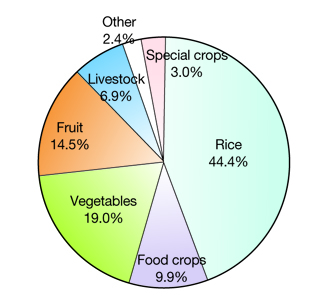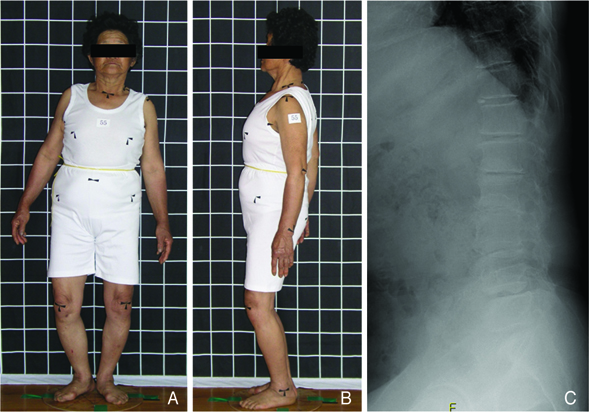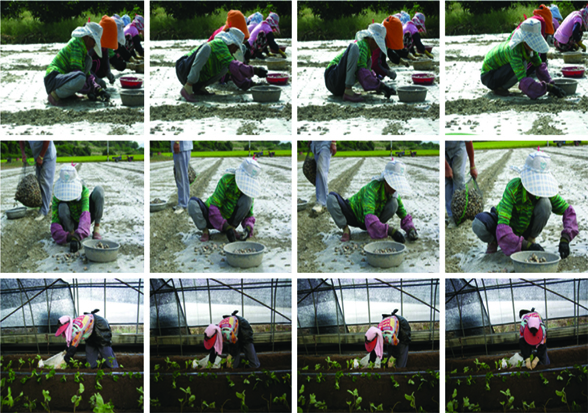J Korean Med Assoc.
2012 Nov;55(11):1054-1062.
Work-related musculoskeletal disorders in Korean farmers
- Affiliations
-
- 1Department of Occupational and Environmental Medicine, Chosun University School of Medicine, Gwangju, Korea. cglee@chosun.ac.kr
Abstract
- This paper evaluates the current state of work-related musculoskeletal disorders of Korean farmers. Korean farmers are exposed to a multitude of ergonomic risk factors, and have high rates of musculoskeletal disorders such as backpain and knee osteoarthritis, while hip osteoarthritis is relatively low. As of 2010, the average age of Korean farmers is 62.3, and the average period of their work in agriculture is 33.3 years. Therefore, it is difficult to distinguish the influence of natural aging and farm work on the development of musculoskeletal disorders. It is necessary to conduct research on a correlation between specific diagnosis such as rotator cuff syndrome, and farm work in general because farmers complain of a great deal of pain.
Figure
Reference
-
1. Fathallah FA. Musculoskeletal disorders in labor-intensive agriculture. Appl Ergon. 2010. 41:738–743.
Article2. Walker-Bone K, Palmer KT. Musculoskeletal disorders in farmers and farm workers. Occup Med (Lond). 2002. 52:441–450.
Article3. Punnett L, Wegman DH. Work-related musculoskeletal disorders: the epidemiologic evidence and the debate. J Electromyogr Kinesiol. 2004. 14:13–23.
Article4. Lee CG, Park J, Park JS, Sohn SJ. Sociopsychological factors associated with symptoms of work-related musculoskeletal disease. Korean J Occup Environ Med. 2005. 17:104–115.
Article5. Da Costa BR, Vieira ER. Risk factors for work-related musculoskeletal disorders: a systematic review of recent longitudinal studies. Am J Ind Med. 2010. 53:285–323.
Article6. Osborne A, Blake C, Fullen BM, Meredith D, Phelan J, McNamara J, Cunningham C. Prevalence of musculoskeletal disorders among farmers: a systematic review. Am J Ind Med. 2012. 55:143–158.
Article7. Korean Statistical Information Service. Census of agriculture, forestry and fisheries [Internet]. 2011. cited 2012 Oct 12. Daejeon: Statistics Korea;http://kosis.kr/abroad/abroad_01List.jsp.8. Song HS, Yoo SK, Choi CK, Lee CG, Lee KS. Radiological flattening of lumbar lordosis and related factors in some Korean farmers. Korean J Occup Environ Med. 2010. 22:279–289.
Article9. Lee SJ, Park HJ. Work-related musculoskeletal disorders among agricultural workers. J Ergon Soc Korea. 2011. 30:525–534.
Article10. Kim YC, Shin YS. Gender differences in work-related musculoskeletal disorders among agricultural workers. J Ergon Soc Korea. 2011. 30:535–540.
Article11. Holmberg S, Thelin A, Stiernstrom EL, Svardsudd K. Psychosocial factors and low back pain, consultations, and sick leave among farmers and rural referents: a population-based study. J Occup Environ Med. 2004. 46:993–998.
Article12. Cha ES, Kong KA, Moon EK, Lee WJ. Prevalence and changes in chronic diseases among South Korean farmers: 1998 to 2005. BMC Public Health. 2009. 9:268.
Article13. Jhun HJ, Park JY. Estimated number of Korean adults with back pain and population-based associated factors of back pain: data from the fourth Korea National Health and Nutrition Examination Survey. J Korean Neurosurg Soc. 2009. 46:443–450.
Article14. Lotters F, Burdorf A, Kuiper J, Miedema H. Model for the work-relatedness of low-back pain. Scand J Work Environ Health. 2003. 29:431–440.
Article15. Lee CS, Kim YT, Kim E. Clinical study of lumbar degenerative kyphosis. J Korean Soc Spine Surg. 1997. 4:27–35.16. Lee WJ, Cha ES, Moon EK. Disease prevalence and mortality among agricultural workers in Korea. J Korean Med Sci. 2010. 25:Suppl. S112–S118.
Article17. Shane Anderson A, Loeser RF. Why is osteoarthritis an age-related disease? Best Pract Res Clin Rheumatol. 2010. 24:15–26.
Article18. Van Meurs JB, Uitterlinden AG. Osteoarthritis year 2012 in review: genetics and genomics. Osteoarthritis Cartilage. 2012. 08. 21. [Epub]. DOI: 10.1016/j.joca.2012.08.007.
Article19. McWilliams DF, Leeb BF, Muthuri SG, Doherty M, Zhang W. Occupational risk factors for osteoarthritis of the knee: a meta-analysis. Osteoarthritis Cartilage. 2011. 19:829–839.
Article20. Palmer KT. Occupational activities and osteoarthritis of the knee. Br Med Bull. 2012. 102:147–170.
Article21. Pereira D, Peleteiro B, Araujo J, Branco J, Santos RA, Ramos E. The effect of osteoarthritis definition on prevalence and incidence estimates: a systematic review. Osteoarthritis Cartilage. 2011. 19:1270–1285.
Article22. Kim I, Kim HA, Seo YI, Song YW, Jeong JY, Kim DH. The prevalence of knee osteoarthritis in elderly community residents in Korea. J Korean Med Sci. 2010. 25:293–298.
Article23. Shin JY, Kho DH, Kim KH, Kim DH, Kim DH. Polyethylene wear between farming and non-farming patients after total knee arthroplasty. J Korean Knee Soc. 2007. 19:14–19.24. Chung CY, Park MS, Lee KM, Lee SH, Kim TK, Kim KW, Park JH, Lee JJ. Hip osteoarthritis and risk factors in elderly Korean population. Osteoarthritis Cartilage. 2010. 18:312–316.
Article25. Chudyk AM, Ashe MC, Gorman E, Al Tunaiji HO, Crossley KM. Risk of hip fracture with hip or knee osteoarthritis: a systematic review. Clin Rheumatol. 2012. 31:749–757.
Article26. Harris-Hayes M, Royer NK. Relationship of acetabular dysplasia and femoroacetabular impingement to hip osteoarthritis: a focused review. PM R. 2011. 3:1055–1067.e1.
Article27. Jensen LK. Hip osteoarthritis: influence of work with heavy lifting, climbing stairs or ladders, or combining kneeling/squatting with heavy lifting. Occup Environ Med. 2008. 65:6–19.
Article28. Boocock MG, Collier JM, McNair PJ, Simmonds M, Larmer PJ, Armstrong B. A framework for the classification and diagnosis of work-related upper extremity conditions: systematic review. Semin Arthritis Rheum. 2009. 38:296–311.
Article29. Shanahan EM, Sladek R. Shoulder pain at the workplace. Best Pract Res Clin Rheumatol. 2011. 25:59–68.
Article30. Jung S, Chae Y, Roh S. Comparing the characteristics of CTS by the frequency of exposure to wrist-burdening work: CTS surveillance system, 2001-2004. Korean J Occup Environ Med. 2010. 22:85–94.
Article
- Full Text Links
- Actions
-
Cited
- CITED
-
- Close
- Share
- Similar articles
-
- Factors Affecting Musculoskeletal Symptoms among Korean Farmers: Focusing on the Sociodemographic Characteristics
- Work-Related Musculoskeletal Disorders Among Farmers in the Southeast Asia Region: A Systematic Review
- Awareness of the Prevention of Work-Related Diseases among Farmers - Based on Qualitative Research Methods
- A Cross-sectional Study of Musculoskeletal Symptoms and Risk Factors in Cambodian Fruit Farm Workers in Eastern Region, Thailand
- Characteristics of Work-Related Musculoskeletal Disorders and Effect of Intervention Program in Shipyard Workers






